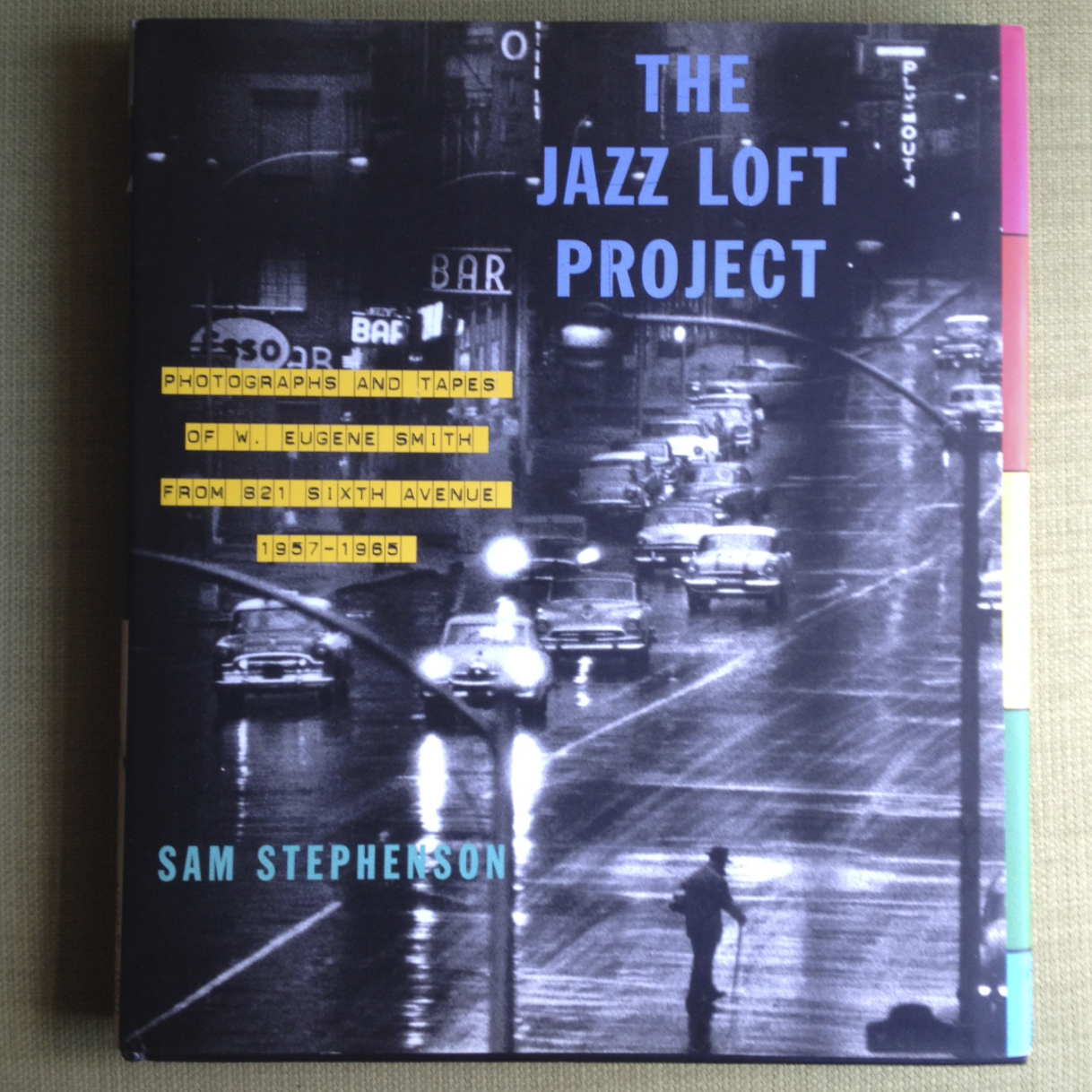Inspiring Older Readers
 posted on 20 Sep 2015
posted on 20 Sep 2015
I love jazz and I love photography and this book (published in 2009) brings those two passions crashing together. Crashing because of the rawness of the photography and aspects of the jazz lives it features.
If we think of jazz photography most of us will think of Herman Leonard first – his were the classic black and white images of what some would still consider the golden age of jazz. Mainly shot in performances with multiple strobes to ease the light to something usable they are not sharp PR shots but atmospheric and often full of a smoky haze.
W. Eugene Smith is well known in photography circles as a brilliant, dedicated and obsessive documentary photographer. His famous images are of locations far removed from the jazz clubs of America. He documented the mercury poisoning amongst the fishing communities of Minimata in Japan and was a pioneer of what we would call photo-journalism with such stories as The Country Doctor. His The Walk to Paradise Garden (1946) a single photo of his two children walking hand in hand towards a clearing in woods was the closing image in the groundbreaking 1955 MOMA exhibition, The Family of Man organized by Edward Steichen
In the mid-’50s he left a lucrative contract with Life magazine and started working with the Magnum agency. He had a family to support but his personal life was complex and he had a lover and child in another town. In 1957 he had just come off a commissioned three-week story about Pittsburgh that had turned into an obsessive year-long odyssey that never saw the light of day until after his death. He just couldn’t finish it.
Something must have cracked as he left behind his contract, his family and his lover and moved into a virtually derelict loft in the Flower District of New York’s Mid West Side. But it wasn’t any old loft. This was a loft where the cream of jazz musicians, some famous some not so, rehearsed and hung out in night-long sessions.
And upstairs was Hall Overton the famed classical composer and teacher who was also involved in jazz (later Abdullah Ibrahim sought him out and took lessons in arranging and composing). And what an intriguing and little known story this became. Like the Pittsburgh material the Jazz Loft pictures never emerged before Gene Smith’s death but what an insight into jazz in NYC they are.
And not just jazz pictures. Smith wired the whole place for sound and recorded a smorgasbord of jazz jams, musicians jiving and radio broadcasts on tape. As well as multiple mikes and tape recorders he had many cameras with different lenses and as well as shooting the action in the loft he pointed his cameras at the ever changing action on the street below, come rain and come sun and snow.
The pictures take atmosphere to a point even beyond what Leonard did. Shot entirely in available light – if you can call it available – that often consisted of one or two bare bulbs the images are grainy, often blurred and have an edginess that seems to fit perfectly with the location and what was going on – and of course they fit perfectly with jazz. As Smith said: “Available light is any damn light that is available!”
One of the most remarkable things, given the sheer number of great jazzers that passed through the place, is how come there has never been a film about the Jazz Loft? Mingus, Zoot Sims, Bill Evans, Roland Kirk, Alice Coltrane, Don Cherry, Sonny Rollins and our own Peter Ind– the list is just amazing. And Monk rehearsed here with the full band with the collaboration of Hall Overton for the famous Town Hall Concert of 1959.
And not just jazz musicians were there – the scene attracted photographers like Robert Frank , Diane Arbus and even Henri Cartier-Bresson. Salvador Dali and Norman Mailer were among other visitors.
And until this book no one had seen the photographs or had a chance to read or hear any of the transcripts from the recordings. The book is a tome but it only scratches the surface of the material. Gene left the Loft in ’65 and died in 1978. When his archive was sent to the Center for Creative Photography at the University of Arizona in 1977 it took two 18-wheelers to haul the 22 tons of stuff.
The Jazz Loft Project book is a labour of love by Sam Stephenson of the Center for Documentary Studies at Duke University in North Carolina. He spent over 15 years on the project, including sifting through the archive, research, transcription and the creation of the book and an exhibition.
Most of us who love jazz, love photography of jazz and the photographs and testimony in this book will engage and surprise any jazz fan – it’s just as brilliant as the music created by those jazz greats and what an experience it must have been to have eavesdropped, even from outside, on those late night sessions.
Brian Homer
September 2015
The Jazz Loft Project, Photographs and Tapes of W. Eugene Smith from 821 Sixth Avenue 1957 – 1965. Sam Stephenson. Alfred A. Knopf New York. ISBN 978-0-307-26709-2
More at www.jazzloftproject.org